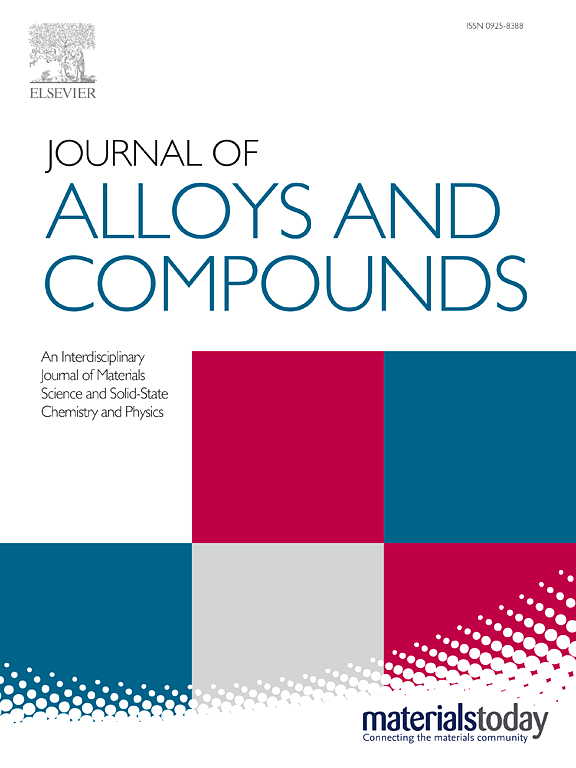具有增强光催化活性的z型CdTe/CaTiO3-x钙钛矿异质结构的制备
IF 5.8
2区 材料科学
Q2 CHEMISTRY, PHYSICAL
引用次数: 0
摘要
光电化学水分解和污染物降解是解决能源危机和环境修复的重要技术。本研究采用简单的水热法制备了CdTe修饰的氧空位介导CaTiO3纳米立方(CaTiO3-x) (CdTe/CaTiO3-x)的异质结体系。此外,利用Z-scheme光催化机制探索和分析了可能的电荷转移途径和活性物质的产生。CdTe/CaTiO3-x异质结构由于其价带和导带结构更适合吸收阳光、更高的e-/h+分离效率、更强的电子传导能力和更强的亲水性而增强了光催化活性。在1.23 V vs. RHE下,CdTe/CaTiO3-x光电极的光电流密度最大,为400µA cm-2,是CaTiO3光电极的4倍。CdTe/CaTiO3-x在反应时间1 h内可降解RhB约84%。这项工作开辟了利用CdTe调节钙钛矿型半导体材料光催化活性的可能性,以制造可回收的双功能光催化剂。本文章由计算机程序翻译,如有差异,请以英文原文为准。
Fabrication of Z-scheme CdTe/CaTiO3-x perovskite heterostructure with enhanced photocatalytic activity
Photoelectrochemical water splitting and pollutant degradation are promising technologies for the energy crisis and environmental remediation. In this study, a heterojunction system of oxygen vacancies mediated CaTiO3 nanocubes (CaTiO3-x) modified with CdTe (CdTe/CaTiO3-x) was prepared using a simple hydrothermal method. Additionally, possible charge transfer pathways and the generation of active species are explored and analyzed using the Z-scheme photocatalytic mechanism. The CdTe/CaTiO3-x heterostructure enhances photocatalytic activity due to its valence and conduction band structures that are more suitable for absorbing sunshine, higher e-/h+ separation efficiency, stronger electronic conduction ability, and greater hydrophilicity. The greatest photocurrent density of 400 µA cm-2 at 1.23 V vs. RHE is thus achieved by the CdTe/CaTiO3-x photoelectrode among the four electrodes, which is four times greater than that of the CaTiO3 photoelectrode. Also, about 84% of RhB degradation was attained by the CdTe/CaTiO3-x within 1 h of reaction time. This work opens up the possibility of tuning perovskite-type semiconductor materials' photocatalytic activity using CdTe in order to make recyclable bifunctional photocatalysts.
求助全文
通过发布文献求助,成功后即可免费获取论文全文。
去求助
来源期刊

Journal of Alloys and Compounds
工程技术-材料科学:综合
CiteScore
11.10
自引率
14.50%
发文量
5146
审稿时长
67 days
期刊介绍:
The Journal of Alloys and Compounds is intended to serve as an international medium for the publication of work on solid materials comprising compounds as well as alloys. Its great strength lies in the diversity of discipline which it encompasses, drawing together results from materials science, solid-state chemistry and physics.
 求助内容:
求助内容: 应助结果提醒方式:
应助结果提醒方式:


